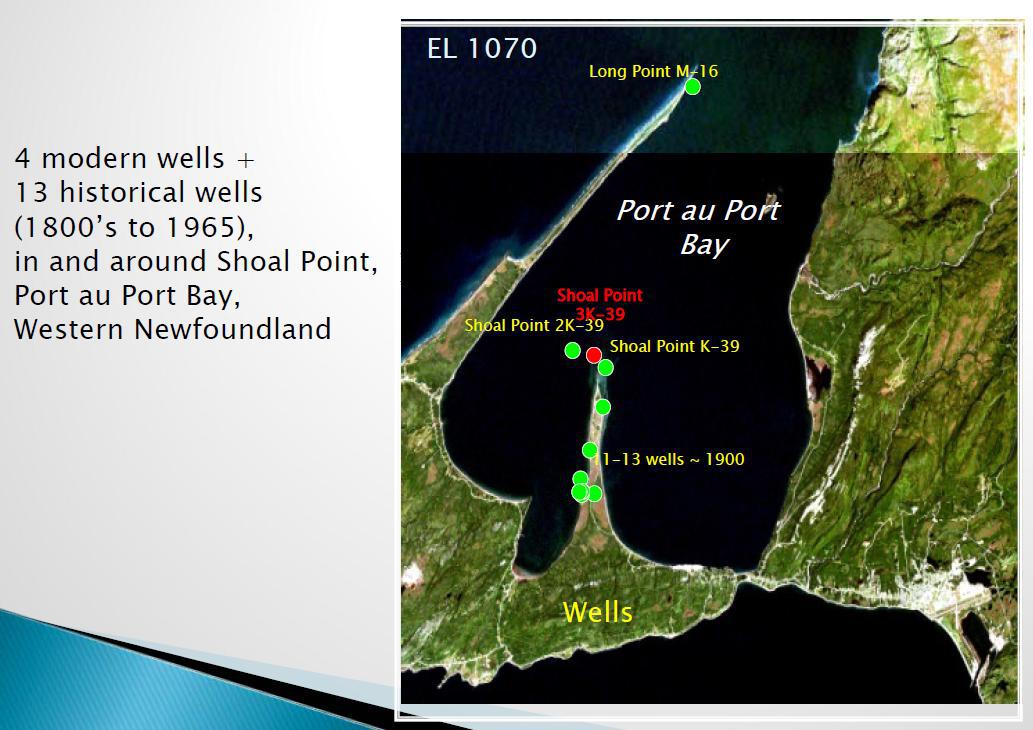source: http://seekingalpha.com/article/412511-newfound-billions-of-barrels-of-shale-oil-in-newfoundland?source=email_macro_view&ifp=0

Source: Shoal Point Energy website.
Here is a link to a map showing all of the oil and gas activity in eastern Canada.
Oil exploration and production is well established in the offshore basins of eastern Newfoundland with fields such as Hibernia, Terra Nova, and White Rose producing around 300,00 barrels of light crude per day. (One wonders why exploration and production off Canada's east coast has been allowed where geologically similar areas off the U.S. east coast are off limits.) Newfoundland is also "friendly" to the oil and gas business, both environmentally and economically. There is even a refinery in Newfoundland , a good infrastructure network, and a trained workforce in place, presumably eager to expand and grow. Again this is a refreshing contrast to the U.S.
The Green Point Shale in Newfoundland apparently compares well with the south Texas Eagle Ford Shale that is attracting so much attention. These factors include total organic content (TOC) of the shales and the thermal maturity of the shales, that is their ability to contain and produce both oil and gas. One major difference is the Green Point Shale is far thicker in this area than the Eagle Ford Shale is in Texas.
Apparently the Green Point Shale is much thicker than the Eagle Ford Shale, (and many other shales) because it has been through at least one episode of comressional tectonics, or mountain-building. This has taken the layers of shale, and compressed them, pushing them together like a deck of cards on a table would be pushed together to overlap into a single large deck of cards. This is a positive aspect to this play. The negative to this "mountain building" is the layers of rock are much more structurally complex than the shales in for example, the Eagle Ford Shale, Barnett Shale, Haynesville Shale, and the Bakken Formation. This makes for more difficult drilling and development. On the other hand, these shales probably compare more favorably with the successfully developing Marcellus Shale in the Pennsylvania area of the eastern U.S.
The exploration of the Green Point Shale is in its preliminary stages but there are some very positive initial results in the area. However the claims of "Billions" of barrels of oil seem premature and a bit sensational to me, still this area is very much worth watching.
This activity is discussed in more detail here:
Peter


